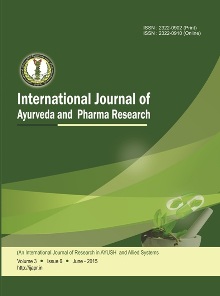Bhavaprakasha Nighantu: A Comprehensive Review
Abstract
The Bhavaprakasha Nighantu is a significant Ayurvedic text that serves as a bridge between classical and evolving medical traditions. Authored by Bhavamishra in the 16th century, it is a vital part of Bhavaprakasha, one of the Laghutrayi (three minor Ayurvedic classics). The text is distinguished by its structured classification of medicinal substances into 23 Vargas (groups), covering plant-based, mineral, and animal-derived drugs, as well as dietary articles. Bhavamishra's approach integrates traditional formulations with newly introduced drugs, influenced by Unani medicine and global trade, marking an important advancement in Ayurvedic Dravyaguna (pharmacology). A notable feature of Bhavaprakasha Nighantu is its detailed plant descriptions, including regional names, properties, actions, and therapeutic uses. Bhavamishra’s work also introduces concepts like Pratinidhi Dravya (substitute drugs) and emphasizes drug testing methodologies, ensuring standardization in Ayurvedic practice. His contributions significantly expanded the Ayurvedic Materia Medica, making his work a foundation for future research. The commentary by Dr. K.C. Chunekar further enhances the text’s relevance, providing botanical identification, pharmacological insights, and cross-referencing with modern science. Chunekar’s work aids in bridging Ayurveda with contemporary research, making Bhavaprakasha Nighantu a timeless reference for scholars, practitioners, and researchers. This review highlights the historical, pharmacological, and therapeutic significance of the text while underscoring its continued relevance in Ayurvedic medicine and modern botanical studies.

Copyright (c) 2025 International Journal of Ayurveda and Pharma Research

This work is licensed under a Creative Commons Attribution-NonCommercial-ShareAlike 4.0 International License.


